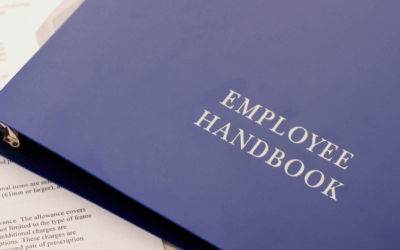Payroll shouldn’t feel like a revolving door. The fastest way to cut turnover in 2025 is to combine values-aligned hiring, flexible work options, and data-driven retention tactics. When those three levers move together, you head off exits before the farewell cupcakes are ordered and keep momentum on growth instead of backfilling.
Turnover, simply put, is the percentage of employees who quit during a set period. In the United States, voluntary turnover now hovers between 17 % and 19 %—roughly one out of every five people you worked hard to recruit and train. Beyond the lost expertise, each departure costs 50 %–200 % of that employee’s salary once recruiting fees, ramp-up time, and cultural drag are tallied.
This guide hands you the antidote: 15 proven, no-fluff strategies used by small and mid-sized companies that refuse to bleed talent. From turning your onboarding into a 90-day immersion to arming managers with real-time feedback tools, each tip is concrete, affordable, and suited to a hybrid-first workforce. Work through them one at a time or build a full retention playbook—either way, you’ll see fewer goodbye emails and more anniversary celebrations. Your finance team will notice the savings, too.
1. Hire for Values Alignment and Growth Potential
A bad hire is the seed of future turnover. When people join a company whose values feel foreign—or where they can’t picture a future—they update their résumés long before their first review. Locking in values alignment and learning agility at the hiring stage is the single cheapest way to start reducing staff turnover.
Why it matters in 2025
“Culture fit” screens out sameness. “Culture add” screens in diverse voices that share your core beliefs while bringing fresh thinking. That difference matters more than ever in 2025, when Gen Z makes up nearly one-third of the workforce and openly rejects employers that can’t state a purpose beyond profit. Get the match wrong and they’ll bounce in under a year; get it right and their loyalty spikes, along with innovation.
Step-by-Step Action Plan
- Translate company values into a four-point rubric (behaviors, not slogans).
- Build structured interview questions that provoke real stories: “Tell me about a time you chose principle over speed.”
- Add a future-skills segment—scenario questions that reveal learning agility and growth mindset.
- Score every candidate collaboratively; debrief immediately to check bias.
Tools & Metrics
- AI-assisted screening: HireVue, Applied, TalentSorter
- Interview scorecards in your ATS
- KPI watchlist
- Turnover-by-hire-source (%)
- First-year regrettable loss rate
- Values-alignment interview score average
Nail these steps and your next onboarding class will already feel like insiders—dramatically lowering churn risk from day one.
2. Strengthen Onboarding Into a 90-Day Immersion Program
Signing an offer is only halftime; the real win comes when that new hire feels productive, plugged-in, and proud to stay. A 90-day immersion program replaces the one-day firehose with a paced journey that layers culture, competence, and connection—three levers proven to lower early attrition and start reducing staff turnover before it ever appears on a spreadsheet.
Critical Elements of Modern Onboarding
New employees decide quickly whether they made the right move. Stack the odds in your favor with:
- Pre-boarding checklists sent the minute the offer is accepted (equipment, paperwork, welcome video)
- A buddy system that pairs every hire with a trained peer guide for the first month
- “First-week wins” built into the plan—small, meaningful tasks that ship real value fast
- A 30-/60-/90-day roadmap covering culture norms, systems mastery, and role expectations
Hybrid & Remote Considerations
Distributed teams need extra intentionality:
- Record a virtual office tour and slack-intro thread to humanize faces and spaces
- Deliver asynchronous micro-learning modules so time zones aren’t a barrier
- Schedule camera-on coffee chats with cross-functional stakeholders to build informal networks
Success Measures
Track whether the immersion sticks:
- 90-day retention rate
- New-hire eNPS (ask, “Would you recommend working here?”)
- Time-to-productivity—define a role-specific milestone and measure days to reach it
When these metrics trend up, your onboarding isn’t a box to tick—it’s a moat around your talent.
3. Provide Competitive, Transparent Compensation Packages
Money isn’t the only reason people leave, but opaque or below-market pay is rocket fuel for exits. Clear, well-structured compensation shows employees you value their contribution and saves you from costly renegotiations after they’ve accepted a rival offer. In short, smart pay design is one of the fastest levers for reducing staff turnover without adding new perks nobody asked for.
Pay Transparency Laws Expanding in 2025
- Thirteen states—including CA, CO, IL, NY, and WA—now require salary ranges in job ads.
- Employers must disclose “good-faith” ranges and can be fined for vague language.
- Internal transparency matters too: publish band outlines on the intranet so existing staff don’t feel short-changed.
Building Pay Frameworks
- Benchmark every role yearly against at least two reputable surveys.
- Run an internal equity audit using
median pay ratio = employee pay / midpoint. Flag ratios under 0.95. - Document clear progression steps (e.g., Engineer I → Engineer II) so raises feel earned, not negotiated.
Beyond Base Pay
- Spot bonuses for mission-critical wins
- Student-loan repayment match (up to $100/month)
- Earned-wage access apps to smooth cash flow
Bundling transparent ranges with creative, equitable add-ons keeps wallets happy and resumes off recruiters’ desks.
4. Offer Flexible Work Arrangements and Work-Life Integration
Commute times, caregiver duties, and mental bandwidth all hit the balance sheet as turnover if leaders ignore them. By normalizing flexibility, you respect real lives and gain loyalty that can’t be bought with pizza Fridays alone. In 2025, flexible work is table stakes for reducing staff turnover—especially among parents, caregivers, and the 56 % of Gen Z who say location freedom is non-negotiable.
Flexibility Models That Work
- Four-day week pilots
32 hours at full pay, with productivity targets instead of seat time. - Core-hour schedules
Everyone overlaps 11 a.m.–3 p.m.; the rest is up to the employee. - “Work from anywhere” months
One or two designated months a year when employees can log in from any time zone. - Split-shift options
Break the day around school drop-offs or elder-care blocks.
Each model shifts focus from hours logged to outcomes delivered.
Policy Guardrails
- Define eligibility (role, performance, security needs).
- Publish communication norms—e.g., response within one business day on Slack.
- Equip remote staff with secure VPNs and stipends for ergonomic setups.
- Reinforce boundaries: encourage no-meeting Fridays and auto-block lunch hours on calendars.
Measuring Impact
Track the ripple effects, not just participation:
- PTO usage rates—healthy upticks signal true recharge time.
- Absenteeism and unplanned overtime—both should decline.
- Exit-survey mentions of “work-life” concerns—aim for a downward trend quarter over quarter.
When flexibility is structured and measured, it becomes a strategic moat against attrition.
5. Build Clear Career Paths and Internal Mobility Programs
Stalled growth is a top reason employees ghost exit surveys. When people can’t see their next challenge inside your walls, recruiters offering shiny titles will. Designing visible, attainable career paths—then backing them with real mobility options—turns advancement into a magnet for loyalty and goes a long way toward reducing staff turnover without raising payroll costs.
Mapping Ladders and Lattices
Sketch both vertical ladders (e.g., Analyst → Senior Analyst → Manager) and horizontal lattices that let specialists pivot into new disciplines. Document the competencies, experience, and pay band tied to each rung, then publish the map on your intranet. Visual clarity answers the “What’s next for me?” question before it festers.
Development Conversations
Swap once-a-year promotions chats for quarterly “career GPS” meetings. Managers ask three prompts:
- Which skills are you excited to sharpen?
- What blockers can I remove?
- What project stretch would feel meaningful this quarter?
Capture answers in your HRIS so progress—and promises—don’t vanish.
Internal Gig Marketplaces
Talent-marketplace software (Gloat, Workday Opportunities) lets employees bid on short-term projects, backfills, or stretch roles. Measure success by the percent of open positions filled internally and the turnover rate of marketplace participants—companies report up to a 25 % drop in regrettable losses when gigs become growth fuel.
6. Foster a Culture of Continuous Feedback and Coaching
Nothing drains loyalty faster than feeling unheard between annual reviews. Replacing once-a-year judgments with steady, two-way dialogue keeps goals clear, surfaces blockers early, and is one of the simplest levers for reducing staff turnover—because employees stay where they keep growing.
Moving From Annual Reviews to Ongoing Conversations
- Lock in bi-weekly 1:1s (30 minutes, agenda shared in advance).
- Use real-time feedback apps (Lattice, 15Five) so praise or course-corrections land while the work is fresh.
- Close each quarter with a lightweight check-in that revisits goals, learning wins, and roadblocks—no surprise grades.
Coaching Skills for Managers
Equip leaders to coach, not just evaluate:
- Active listening—mirror and clarify before advising.
- Feed-forward questions—“What will success look like next sprint?” focuses on future behavior.
- SMART follow-ups—document Specific, Measurable, Achievable, Relevant, Time-bound actions and revisit them at the next 1:1.
KPIs
Track whether feedback culture is sticking:
- Manager quality score (aggregate of employee pulse responses).
- Feedback frequency ratio (
# feedback interactions / # employees per month). - Correlation between teams’ feedback ratios and voluntary turnover rates.
7. Recognize and Reward Contributions Frequently and Fairly
Recognition is jet fuel for engagement. When people see their work valued in real time, motivation sticks around longer than any gift card—and so do they. Formalizing gratitude prevents great efforts from slipping through the cracks and plays a direct role in reducing staff turnover for growth-minded SMBs.
Designing a Recognition System
Start simple, scale later:
- Peer-to-peer kudos channels (Slack #shoutouts, monthly “kudos cards”)
- Point-based platforms that convert praise into perks employees choose
- Mix of public spotlights (town-hall call-outs) and private notes for those who prefer low-key appreciation
- “Values badge” awards that tie achievements back to company principles
- Quarterly budget set aside for manager-driven micro-bonuses
DEI Lens on Recognition
Audit who’s getting praised. If women, caregivers, or remote teammates appear less in your kudos feed, coach managers to look wider. Equitable celebration signals belonging as loudly as pay equity.
Tracking ROI
Layer recognition data onto your HRIS: quit rate by recognition frequency. Companies that hit at least two recognition touches per employee per month often see voluntary exits drop 10–15 % within a year. Measure, tweak, repeat.
8. Invest in Employee Well-Being and Mental Health Support
Stress, anxiety, and financial strain don’t clock out when employees log in. When leaders treat well-being as a cost center, people quietly update LinkedIn. Treat it as a retention asset, and you gain energy, focus, and loyalty that payroll can’t buy. For SMBs looking at reducing staff turnover, a comprehensive wellness strategy now outranks fancy office perks.
2025 Well-Being Expectations
Today’s workforce expects proactive, tech-enabled support:
- On-demand therapy or coaching apps that launch in three taps
- Automated “micro-break” nudges after 90 minutes of screen time
- Financial-wellness stipends for budgeting tools or student-loan payments
- Quiet rooms and sensory-friendly zones for neurodiverse staff
Fail to offer these, and employees will find an employer who does.
Building a Holistic Program
Think four pillars—physical, emotional, social, and financial:
- Physical: subsidize fitness apps, ergonomic stipends, annual health screenings.
- Emotional: company-paid therapy sessions, mindfulness workshops, manager mental-health training.
- Social: volunteer days, peer support circles, community Slack channels.
- Financial: emergency savings matches, transparent 401(k) guidance, debt counseling.
Bundle resources on a single well-being portal so benefits aren’t a scavenger hunt.
Measurement
Quantify impact the same way you track sales:
- Monthly burnout pulse survey (
≤ 3.0on a 5-point stress scale is green) - EAP utilization rate—aim for 8–12 % (higher shows awareness, not crisis)
- Stress-related workers’ comp or leave claims—target year-over-year decline
Correlate these metrics with voluntary turnover; improvements should move in lockstep. When well-being data trends positive, so does retention.
9. Upskill and Reskill Through Personalized Learning Paths
When roles evolve every quarter, betting on yesterday’s know-how invites churn. A living learning ecosystem keeps employees future-proof and loyal—critical for reducing staff turnover while tech, AI, and regulations keep shifting.
Why Skills Agility Beats Tenure
The half-life of many technical skills is now about 2.5 years; even “safe” functions from finance to customer success feel the squeeze. Workers stay where they can swap obsolete skills for in-demand ones without changing badges.
How to Personalize Learning
- Run skills diagnostics each March and September.
- Let employees pick from curated “choose-your-own-adventure” playlists that match business goals.
- Pair stretch projects with micro-credentials so learning happens in the flow of work.
Programs & Metrics
| Levers | Example Tools | KPI to Track |
|---|---|---|
| Adaptive LMS | Degreed, EdApp | Course completion % |
| Micro-credential hubs | Coursera, Pluralsight | New skill proficiency score |
| Internal academies | Manager-led cohorts | Retention of program grads vs. baseline |
10. Empower Managers With Leadership Development
Employees quit bosses, not companies. Even the richest benefits package can’t outrun a micromanager or a leader who dodges tough conversations. When you invest in managerial muscles, you create daily experiences that make people want to stay—an essential lever for reducing staff turnover.
The Manager-Turnover Link
Gallup’s long-running survey shows 70 % of engagement variance ties back to the direct manager, and disengaged teams post double the quit rate. Equip leaders to inspire, and retention follows almost automatically.
Must-Have Training Topics
- Empathy and psychological safety
- Inclusive leadership and bias checks
- Conflict mediation and difficult-conversation frameworks
- Change management and transparent decision-making
- Data-fluency: reading pulse scores and turnover dashboards
Deliver training through blended cohorts—live workshops paired with bite-size e-modules and peer coaching circles for reinforcement.
Accountability Mechanisms
- 360-degree feedback every six months; flag themes in a “manager quality” score.
- Tie at least 15 % of bonus potential to team engagement and voluntary turnover metrics.
- Set up monthly manager cohorts where leaders share wins, misses, and a commitment for next sprint.
- Embed retention goals in OKRs:
regrettable turnover ≤ 5 %per team.
When managers grow, so does loyalty—and your company’s bench strength.
11. Conduct Stay Interviews and Act on Insights
Exit interviews tell you why someone left; stay interviews reveal what will make them stay. They cost almost nothing, build trust, and surface quick-win fixes before risk turns into resignation.
Stay Interview Framework
Use a conversational, forward-looking script:
- “What do you look forward to each day?”
- “What would tempt you to start job hunting?”
- “How can I support your career goals?”
Document verbatim quotes and rate each answer on impact (1–5).
Turning Data Into Action
Aggregate themes within 48 hours, share a one-page brief with leaders, and log promises in your project tracker. Aim for at least one fast fix per theme—like adjusting meeting cadence—so employees see swift proof you listened.
Timing & Frequency
Run stay interviews at six months tenure, annually thereafter, and immediately after big org changes. Rotate who conducts them (skip-level managers or HR) to remove pressure and collect candid feedback.
12. Promote DEI as a Business Imperative, Not an Initiative
Diversity, equity, and inclusion must live in revenue reviews, not posters. When employees feel safe and represented, they stay; when they don’t, they leave. Make DEI a core business metric and watch voluntary quits shrink.
Linking DEI and Retention
Under-represented employees leave 25 % faster when belonging scores lag (McKinsey 2024). Inclusive teams post 5× higher engagement and up to 50 % lower turnover—proof that DEI is a retention engine, not an HR trend.
Practical DEI Actions
- Run pay-equity audits every merit cycle
- Fund ERGs ($500–$1k per member) and give them OKR ownership
- Expand benefits: gender-affirming care, flexible religious holidays
- Insert bias-interrupt prompts and diverse panels into hiring workflows
Success Indicators
| Metric | Green Zone |
|---|---|
| Representation stability (YoY) | ± 2 % |
| Inclusion pulse score | ≥ 4/5 |
| Regrettable turnover for URGs | ≤ company average |
Bake these numbers into your dashboard and DEI will pull its weight in reducing staff turnover.
13. Use Data Analytics to Predict and Prevent Turnover
Gut feel can’t keep pace with 2025 churn drivers. By wiring engagement, performance, and demographic data into a single view, leaders move from “Why did they leave?” to “Who’s thinking about it and how do we keep them?” The result: faster, smarter decisions that start reducing staff turnover before a resignation hits the inbox.
Setting Up a Retention Dashboard
Start with the data you already own: HRIS, ATS, payroll, pulse surveys, help-desk tickets. Pipe them into a BI tool and build a weekly dashboard that surfaces:
- Voluntary turnover rate by manager and tenure band
- eNPS and burnout scores side-by-side
- Promotion and pay-equity gaps (
pay_ratio = employee_salary / band_midpoint) - PTO balance extremes (> 120 hrs, < 8 hrs) as early stress indicators
Make the dashboard self-service so managers see trends, not just HR.
Predictive Models in 2025
Modern HR suites ship “flight-risk” scoring that weighs 40+ variables—tenure, comp ratio, engagement dips, even badge-swipe patterns. Keep humans in the loop: audit algorithms quarterly for bias against protected classes and document features used, per EEOC guidance. AUC values above 0.75 indicate useful lift without overfitting.
Acting on Signals
Don’t hoard insights—trigger interventions:
- Auto-notify managers when a direct report’s risk score crosses 0.65.
- Offer targeted bundles (stay bonus + learning stipend) within 48 hours.
- Schedule a stay interview and workload review within a week.
Companies that close the loop this fast have cut regrettable quits by 12 % in six months—proof that data analytics isn’t nerd decor; it’s a retention power tool.
14. Streamline Workloads and Eliminate Burnout Drivers
Excess meetings, pointless admin, and hero-mode overtime are silent churn machines. Even generous pay can’t offset chronic overload; employees will simply exit to protect their health. By ruthlessly simplifying work and redistributing effort, leaders can slash stress, raise productivity, and keep the retention gains from earlier tips—an essential move for reducing staff turnover in fast-growing teams.
Identifying Workload Hotspots
- Run a quarterly meeting audit: cancel any gathering without an owner, agenda, or decision goal.
- Use time-tracking or “digital exhaust” reports to spot tasks eating >20 % of weekly hours.
- Watch red-flag KPIs: sustained overtime >10 hrs/week, ticket queues aging >14 days, or pulse surveys where “manageable workload” scores fall below 3.5/5.
Redesigning Workflows
- Automate low-value steps with no-code tools (Zapier, Power Automate).
- Cross-train adjacent teams so peaks get absorbed without heroics.
- Create a “stop doing” list each sprint; executive sponsors must approve any new project that replaces it.
- Cap meetings at 25 or 50 minutes and default to async updates.
Gauging Effectiveness
Track a mini dashboard:
- Burnout index (pulse survey) — target ≤ 3.0
- Voluntary overtime hours — trending down 25 % in six months
- Regrettable turnover on high-load teams — converging with company average
When these metrics improve in tandem, you’ve neutralized a top burnout driver and built a stronger moat against attrition.
15. Celebrate Wins and Foster a Sense of Belonging
People don’t leave communities where they feel valued, noticed, and connected. By turning achievements—big and small—into shared moments, you reinforce culture, boost engagement, and keep reducing staff turnover without spending a dime on retention bonuses. The trick is consistency: lightweight rituals that run on autopilot, reach every corner of the org, and spotlight diverse voices.
Rituals That Stick
- Monthly “demo days” where teams showcase quick wins and lessons
- Quarterly off-site retreats focused on reflection, not PowerPoint marathons
- #story-sharing Slack threads that tag company values to real anecdotes
Connection in Distributed Teams
- Virtual coffee-roulette pairings matched by time zone
- Interactive town halls with live polls and emoji reactions
- Asynchronous AMAs recorded so every shift can contribute
Measurement
| Metric | Target | Tool |
|---|---|---|
| Belonging index (pulse survey) | ≥ 4/5 | Lattice |
| Ritual participation rate | ≥ 70 % | HRIS events log |
| Social-network analysis (cross-team ties) | Trending up | Workplace analytics |
Track, tweak, repeat—and watch loyalty compound.
Key Takeaways and Next Steps
Reducing staff turnover isn’t about a single silver bullet—it’s a layered system that starts before day one and continues through every project, promotion, and pulse survey. When each layer reinforces the next, preventable exits plummet and your best people stay to build what’s next.
Remember these levers:
- Values-aligned hiring fills the funnel with candidates primed to thrive.
- 90-day immersion onboarding locks in engagement before doubts appear.
- Transparent, competitive pay and flexible work models remove two of the most cited quit triggers.
- Career paths, continuous feedback, and recognition keep growth visible and motivation high.
- Holistic well-being and personalized learning signal long-term investment in the whole person.
- Manager development, stay interviews, and DEI tackle the human experience factors that analytics alone can’t catch.
- Predictive dashboards and workload redesign turn raw data into timely action, closing the loop on retention.
Executing even a handful of these tactics can cut regrettable turnover within a quarter; weaving all 15 into a cohesive playbook creates a sustainable talent moat.
Ready to see how this looks inside your organization? Our team at Soteria HR can tailor a data-backed retention strategy that fits your growth stage, culture, and budget—so you keep your stars and stop burning cash on backfills. Let’s protect your people and power your next chapter together.




